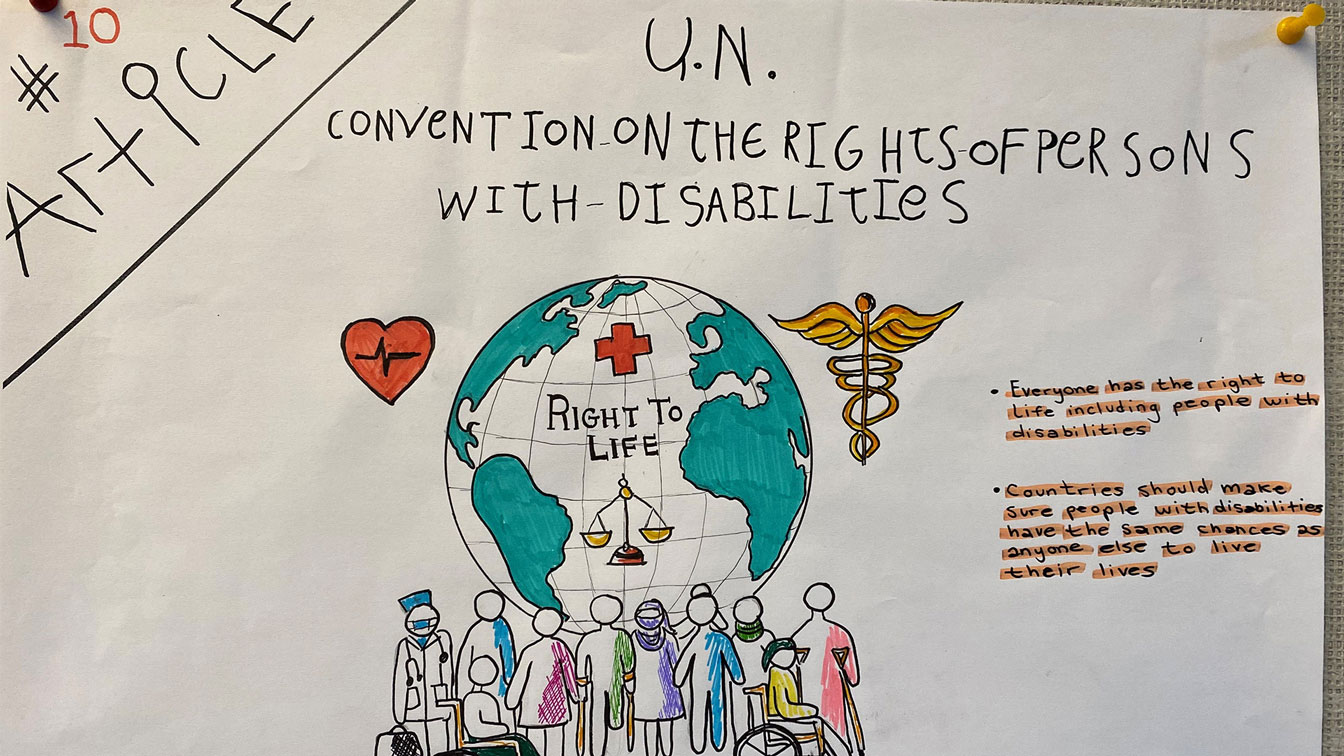Improving accessibility isn’t just a vague goal for North Island College.
There has been a lot of work to make education more accessible in every way since the college launched an Accessibility Plan in the fall of 2023.
As May 25 to 31 has been designated Canadian National AccessAbility Week (NAAW), NIC is pointing out that improving accessibility can take shape in many ways. Overseeing the college’s efforts is the Accessibility Advisory Committee, which includes representatives from staff, the North Island Students’ Union (NISU), leadership and other partners.
“NIC is doing important work in the area of accessibility to ensure our campus facilities and services provide a welcoming, inclusive learning and working environment for our students, employees and other members of the college community,” said Ken Crewe, Associate Vice President, People, Equity and Inclusion, and co-chair of the Accessibility Advisory Committee.
This work may happen in physical spaces, such as the recent replacement of some outdoor ground tiles with concrete to provide a smooth surface for people who need it for mobility.
There is the upcoming installation of an assistive listening system in the Stan Hagen Theatre, as well as braille signage and emergency lighting around NIC. Accessibility was also a key consideration in the launch of NIC’s new website, with provisions for people who need to use screen readers on the site or access their courses online.
The Library and Learning Commons has undertaken accessibility work, including digital resources with improved assistive technology compatibility, while the Comox Valley computer lab is an accessible workspace with height-adjustable desks.
NIC is also making it easier for any student to access help, such as research, writing, math and peer tutoring suited to individual students.
The committee is considering student needs up front without waiting for them to ask.
“It is pretty humbling to face barriers in day-to-day life. When those barriers are eliminated, the campus community feels seen and considered,” said NISU Executive Director, Carissa Wilson.
Prior to the committee, work was happening in a more ad hoc way, but now it is regular and ongoing.
Other examples of changes include ramp installation, better access to automatic door switches, wayfinding signs around campus, sharps disposals and power outlets in washrooms for people who use medical equipment—all of which are aimed at providing consistency from building to building.
One example of accessibility work that goes back several years is the collaboration between the Accessible Education and Training (AET) department and the college’s nursing students.
The AET students worked with students in the Bachelor of Science Nursing program to hold an event last November that put a spotlight on the United Nations Convention on the Rights of Persons with Disabilities (CRPD). Student Marie O’Brien delivered a speech and wrote an essay about the issue. “The Convention on the Rights of Persons with Disabilities makes sure that everyone with a disability is educated in their rights and responsibilities. It strengthens the person with disabilities to want to be part of society and contribute to their community,” she said.
The AET students produced posters drawing attention to the various UN Convention articles. At one point in the event, they performed a song in sign language to Louis Armstrong’s “What a Wonderful World.”
“I think it helped build more self-advocacy in some people,” said Liz Girard, Accessible Education & Training department chair and instructor. “The students really took a hand in teaching the community about the UN Convention because people don't really know about this Convention. A lot of countries really lean on the UN Convention to develop policy.”
The nursing students have drawn on their leadership experiences through this type of collaboration to put together curriculum from which the newer nursing students can learn.
“This has really been a student-led initiative,” said nursing instructor Liz McKay, “We had students develop learning activities to be incorporated in years one and two theory classes.”
Despite all the work resulting from NIC’s Accessibility Plan, the goal for the Accessibility Advisory Committee and the college as a whole is to make sure NIC remains a place committed to being accessible in every possible way.
“It really is up to all of us to keep the conversation going,” Wilson said.
This conversation will continue May 28 at 10am in Tyee 113 at the Comox Valley campus. Girard will host a session on the UN Convention on the Rights of Persons with Disabilities to look at different models of disability, see how students are engaging with the CRPD and hold a group discussion.
